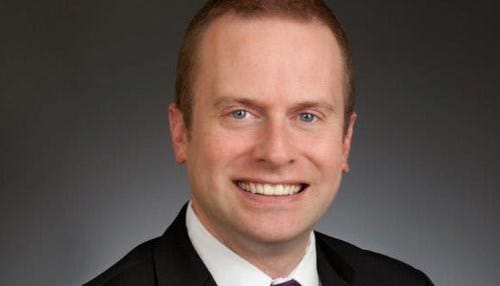Music Cities: Soundtrack For a Stronger Economy
 Huber says more than 90 percent of companies in the city have no international sales.
Huber says more than 90 percent of companies in the city have no international sales.
Subscriber Benefit
As a subscriber you can listen to articles at work, in the car, or while you work out. Subscribe NowMusic is inextricably tied to the economies, and brands of many thriving American cities: think Nashville, Seattle, Atlanta, and Austin as examples. A closer look at Indianapolis’ music scene indicates that with effort and coordination, Indianapolis could and should be in this company.
Consider the following (among a longer list of assets and advantages): 1) Few cities can compete with Indianapolis’ jazz heritage and community. 2) Indianapolis’ growing hip-hop and rock scenes continue to grow and add vibrancy to its neighborhoods. 3) Indianapolis boasts the world’s elite piano and violin competitions (both!), and one of the U.S.’ best symphony orchestras. 4) The Indiana University Jacobs School of Music is one of the best in the world, drawing gifted musicians from around the world to Central Indiana.
How can we connect these assets for the benefit of our economy and community? Last week, Indianapolis held its first ‘Music Cities Forum,’ a day-long event aimed at advancing a music strategy for the Circle City, encouraging artists, events and venues to create a music scene that makes more people #ListenIndy and #LoveIndy – while adding to our economic momentum.
Hosted by HI-FI in Fountain Square and sponsored by the Indy Chamber and other partners, the Forum was brought to Indianapolis by Sound Diplomacy, the leading global advisor on increasing the value of music culture in cities – with their support, attendees got a wide perspective on what makes an impactful music strategy along with local insight from Indy influencers in the arts, hospitality, public and private sectors. It was a great start connecting the dots among music assets, artists, creative professionals and economic development.
The idea that a music strategy could provide the soundtrack for a stronger economy may initially seem a little off-key. But culture and quality of life are top priorities in today’s talent-driven marketplace, and supporting the arts enhances Indy’s appeal to people and employers alike. Further, regional economies that provide career opportunities to artists and creative professionals are highly correlated with broader regional retention and attraction of talent.
A truly comprehensive blueprint for growing Indy’s economy needs to cultivate this conversation and capture the attention of Millennials by positioning the city as a place where artists and creative professionals can thrive, grow, and have a great life. Just as we’ve scaled up ambitious initiatives to grow key industries – like technology, the life sciences, advanced manufacturing and logistics – we need to focus on creative sectors that engage this generation, like design, food, music, film and new media, and sports.
Sports is a useful example. It wasn’t an obvious civic priority back in the 1970s, but the foresight of business and community leaders – and major investments by the Lilly Endowment in IUPUI facilities like the Natatorium – helped land our first amateur events and build a concerted effort that’s carried through the Pan Am Games, Final Fours, the Super Bowl and beyond. The sports strategy delivered an economic impact but was an even more important catalyst for raising our profile and changing our image. Like sports, building our ‘music sector’ can deliver a similar same impact.
Among the good news emerging from the Music Cities Forum is the realization that ideas to grow our music economy are practical, attainable, and do not cost millions of dollars in subsidies: They include harnessing of Indy’s growing co-working and maker-space infrastructure to support arts and culture entrepreneurs. We also need more all-ages music venues, the creation of which is made more difficult by outdated liquor laws.
Indy needs more development options for these creative spaces, like music venues and artist housing. We must expand the ecosystem created by places like the Stutz Artist Colony, Big Car and more, by leveraging community development funds and capitalizing on the targeted revitalization work accomplished through initiatives like Great Places 2020.
Anchored on the circle downtown, Hilbert Circle Theater is a timeless reminder of the importance of arts and culture in Indy and is the home of the Indianapolis Symphony Orchestra- an important player in the music industry. Indy has network of civic partners like the ISO doing important work to support artists and musicians; finding resources for these partners is a critical piece of the puzzle. Organizations like the Arts Council of Indianapolis provide a foundation and support services for artists to not only make a living in Indy, but to grow and thrive.
But we can do more. Like tech or life sciences, ‘seed funding’ can be critical to new music and creative ventures. In the same way that the Indy Chamber’s microlending program helps fledgling businesses, more grants and resources could help cultural entrepreneurs and musicians pursue projects, find affordable housing options, travel, or seek personal development.
Full disclosure: Playing and arranging music is a personal passion of mine. In my work at the Indy Chamber, I see the importance of our nightlife, too – how it’s fueling the influx of talent that’s growing our high-tech industries, bringing new energy to our neighborhoods and energizing our economy. And I see that our metropolitan peers that have distinctive cultural sectors are also among our most dynamic economic competitors.
So given Indy’s wide range of music talent and cultural assets, there is no doubt that music demands a place on our economic development stage, as we showcase Indianapolis to the diverse, next-generation workforce that will build our future.
Michael Huber is chief executive officer of the Indy Chamber.
